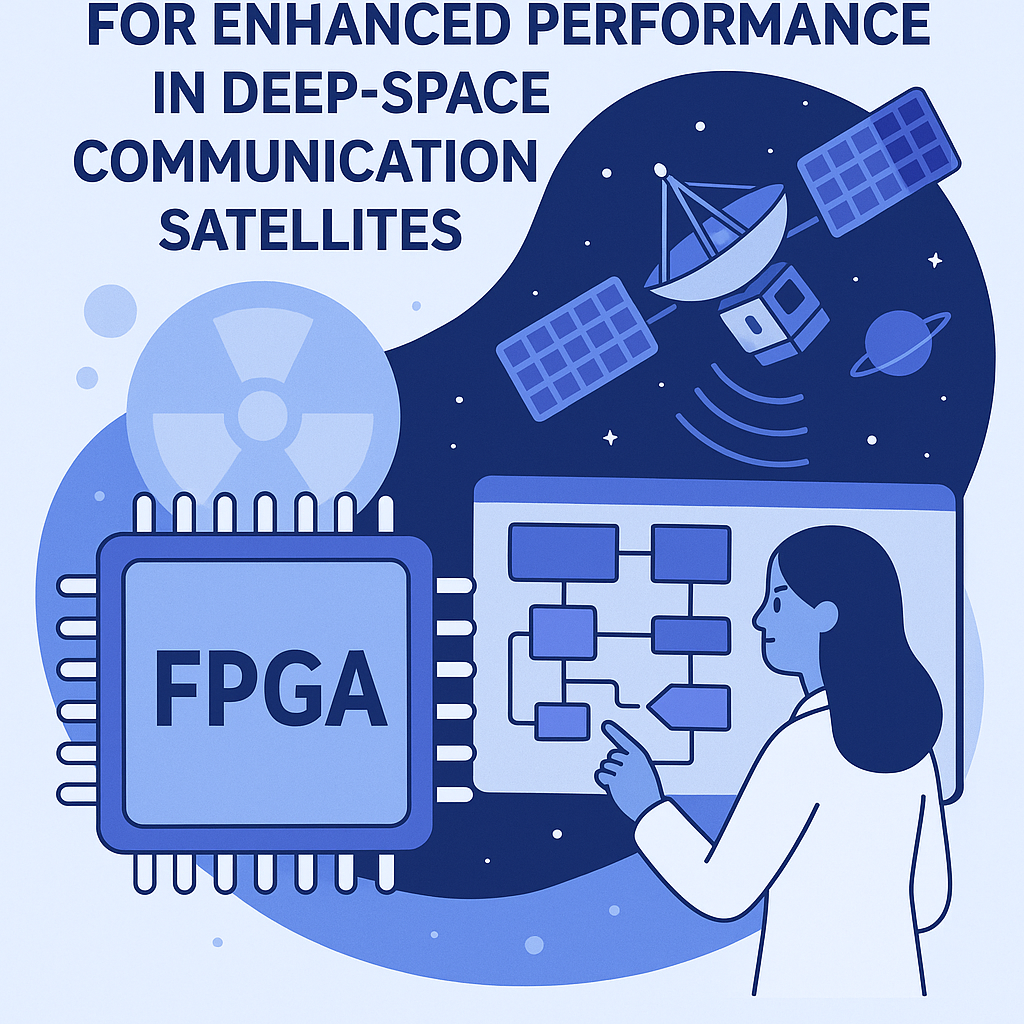Introduction
As the demand for reliable and efficient communication systems in deep space missions continues to grow, advancements in hardware technology play a pivotal role. One significant development in this area is the introduction of new radiation-hardened Field Programmable Gate Array (FPGA) architectures. These innovations are designed to withstand the harsh conditions of space while delivering enhanced performance for deep-space communication satellites. In this blog post, we will explore the key features of these new FPGA architectures, their importance in space applications, and the potential they hold for the future of deep-space communications.
Understanding Radiation-Hardened FPGAs
Radiation-hardened FPGAs are specialized integrated circuits designed to operate reliably in environments with high levels of radiation, such as space. The primary goal of these devices is to mitigate the effects of radiation on electronic components, ensuring uninterrupted performance over extended periods. Key features of radiation-hardened FPGAs include:
- Robustness Against Radiation: These FPGAs are built using advanced materials and design techniques that minimize the risk of Single Event Upsets (SEUs) and other radiation-induced failures.
- Enhanced Error Correction: Many radiation-hardened FPGAs incorporate sophisticated error detection and correction mechanisms to further protect data integrity.
- Flexible Reconfiguration: As FPGAs are reprogrammable, they can be adapted for various tasks, making them particularly well-suited for evolving mission requirements.
Key Features of New FPGA Architectures
The latest radiation-hardened FPGA architectures introduce several innovative features that significantly enhance their performance for deep-space communication:
- Increased Processing Power: New architectures leverage advanced fabrication technologies, offering higher logic density and greater processing capabilities, allowing for more complex computations and data handling.
- Improved Power Efficiency: Enhanced power management techniques reduce energy consumption, which is critical for long-duration missions where power resources are limited.
- Reduced Latency: Innovations in interconnectivity and data transfer protocols minimize communication latency, ensuring faster response times for mission-critical operations.
- Advanced Signal Processing: These FPGAs support sophisticated algorithms for real-time signal processing, enhancing the quality of data transmitted back to Earth.
Applications in Deep-Space Communication
The advancements in radiation-hardened FPGA architectures have far-reaching implications for deep-space communication satellites. Here are some key applications:
- Data Relay Satellites: These satellites require robust communication systems to relay data from planetary missions back to Earth. Enhanced FPGAs enable efficient data handling and transmission in challenging environments.
- Interplanetary Missions: Missions to Mars, Venus, and beyond depend on reliable communication links. The new FPGA architectures ensure that data is transmitted accurately and swiftly, even over vast distances.
- Scientific Instrumentation: Satellites equipped with scientific instruments rely on precise data collection and transmission. The advanced processing capabilities of radiation-hardened FPGAs enhance the performance of these instruments.
Challenges and Considerations
While the new radiation-hardened FPGA architectures offer promising advancements, several challenges must be addressed to ensure their successful implementation:
- Cost: Advanced FPGA technologies can be expensive to develop and produce, which may limit their adoption in some missions.
- Complexity of Design: The integration of sophisticated features may increase the complexity of the design process, necessitating skilled personnel and resources.
- Testing and Validation: Extensive testing is required to ensure that these FPGAs perform reliably under extreme conditions, which can be time-consuming and costly.
Future Prospects
As space exploration continues to expand, the role of radiation-hardened FPGAs will likely become even more critical. Future developments may include:
- Greater Integration: Combining FPGAs with other technologies, such as application-specific integrated circuits (ASICs), to create hybrid solutions that maximize performance and efficiency.
- Artificial Intelligence Capabilities: Integrating AI algorithms directly into FPGA architectures to enhance autonomous decision-making processes for deep-space missions.
- International Collaboration: Collaborative efforts among space agencies and private companies to share knowledge and resources, accelerating the development and deployment of advanced FPGA technologies.
Conclusion
The introduction of new radiation-hardened FPGA architectures marks a significant milestone in the evolution of deep-space communication technologies. By offering enhanced performance, reliability, and flexibility, these FPGAs are poised to play a crucial role in future space missions. As we continue to push the boundaries of exploration, the advancements in FPGA technology will undoubtedly contribute to the success of our endeavors in uncovering the mysteries of the universe.



